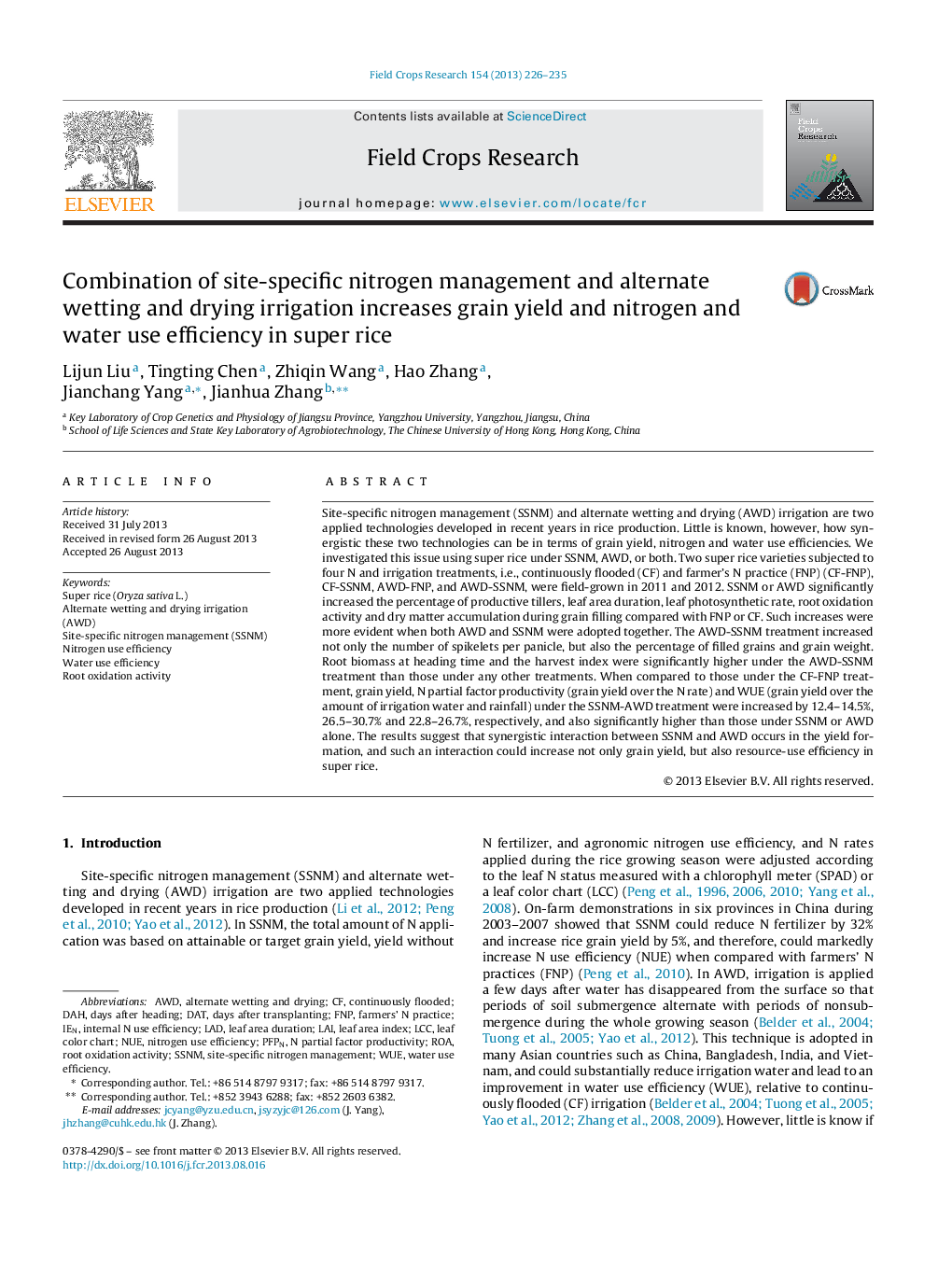| کد مقاله | کد نشریه | سال انتشار | مقاله انگلیسی | نسخه تمام متن |
|---|---|---|---|---|
| 6375184 | 1624709 | 2013 | 10 صفحه PDF | دانلود رایگان |
عنوان انگلیسی مقاله ISI
Combination of site-specific nitrogen management and alternate wetting and drying irrigation increases grain yield and nitrogen and water use efficiency in super rice
ترجمه فارسی عنوان
ترکیبی از مدیریت نیتروژنی محل و آبیاری تر و خشک کردن جایگزین عملکرد دانه و عملکرد نیتروژن و مصرف آب را در برنج فوق العاده افزایش می دهد
دانلود مقاله + سفارش ترجمه
دانلود مقاله ISI انگلیسی
رایگان برای ایرانیان
کلمات کلیدی
DAHpFPNRoot oxidation activityLeaf color chartinternal N use efficiencyIENFNPROALCCSSNMAWDDATNUEWUENitrogen use efficiency - استفاده از نیتروژن بهره وریWater use efficiency - بهره وری استفاده از آبdays after transplanting - روز بعد از پیوندLeaf area index - شاخص سطح برگLAI - شبیهLeaf area duration - طول دوره برگLAD - لادوalternate wetting and drying - مرطوب و خشک کردن متناوب
موضوعات مرتبط
علوم زیستی و بیوفناوری
علوم کشاورزی و بیولوژیک
علوم زراعت و اصلاح نباتات
چکیده انگلیسی
Site-specific nitrogen management (SSNM) and alternate wetting and drying (AWD) irrigation are two applied technologies developed in recent years in rice production. Little is known, however, how synergistic these two technologies can be in terms of grain yield, nitrogen and water use efficiencies. We investigated this issue using super rice under SSNM, AWD, or both. Two super rice varieties subjected to four N and irrigation treatments, i.e., continuously flooded (CF) and farmer's N practice (FNP) (CF-FNP), CF-SSNM, AWD-FNP, and AWD-SSNM, were field-grown in 2011 and 2012. SSNM or AWD significantly increased the percentage of productive tillers, leaf area duration, leaf photosynthetic rate, root oxidation activity and dry matter accumulation during grain filling compared with FNP or CF. Such increases were more evident when both AWD and SSNM were adopted together. The AWD-SSNM treatment increased not only the number of spikelets per panicle, but also the percentage of filled grains and grain weight. Root biomass at heading time and the harvest index were significantly higher under the AWD-SSNM treatment than those under any other treatments. When compared to those under the CF-FNP treatment, grain yield, N partial factor productivity (grain yield over the N rate) and WUE (grain yield over the amount of irrigation water and rainfall) under the SSNM-AWD treatment were increased by 12.4-14.5%, 26.5-30.7% and 22.8-26.7%, respectively, and also significantly higher than those under SSNM or AWD alone. The results suggest that synergistic interaction between SSNM and AWD occurs in the yield formation, and such an interaction could increase not only grain yield, but also resource-use efficiency in super rice.
ناشر
Database: Elsevier - ScienceDirect (ساینس دایرکت)
Journal: Field Crops Research - Volume 154, December 2013, Pages 226-235
Journal: Field Crops Research - Volume 154, December 2013, Pages 226-235
نویسندگان
Lijun Liu, Tingting Chen, Zhiqin Wang, Hao Zhang, Jianchang Yang, Jianhua Zhang,
